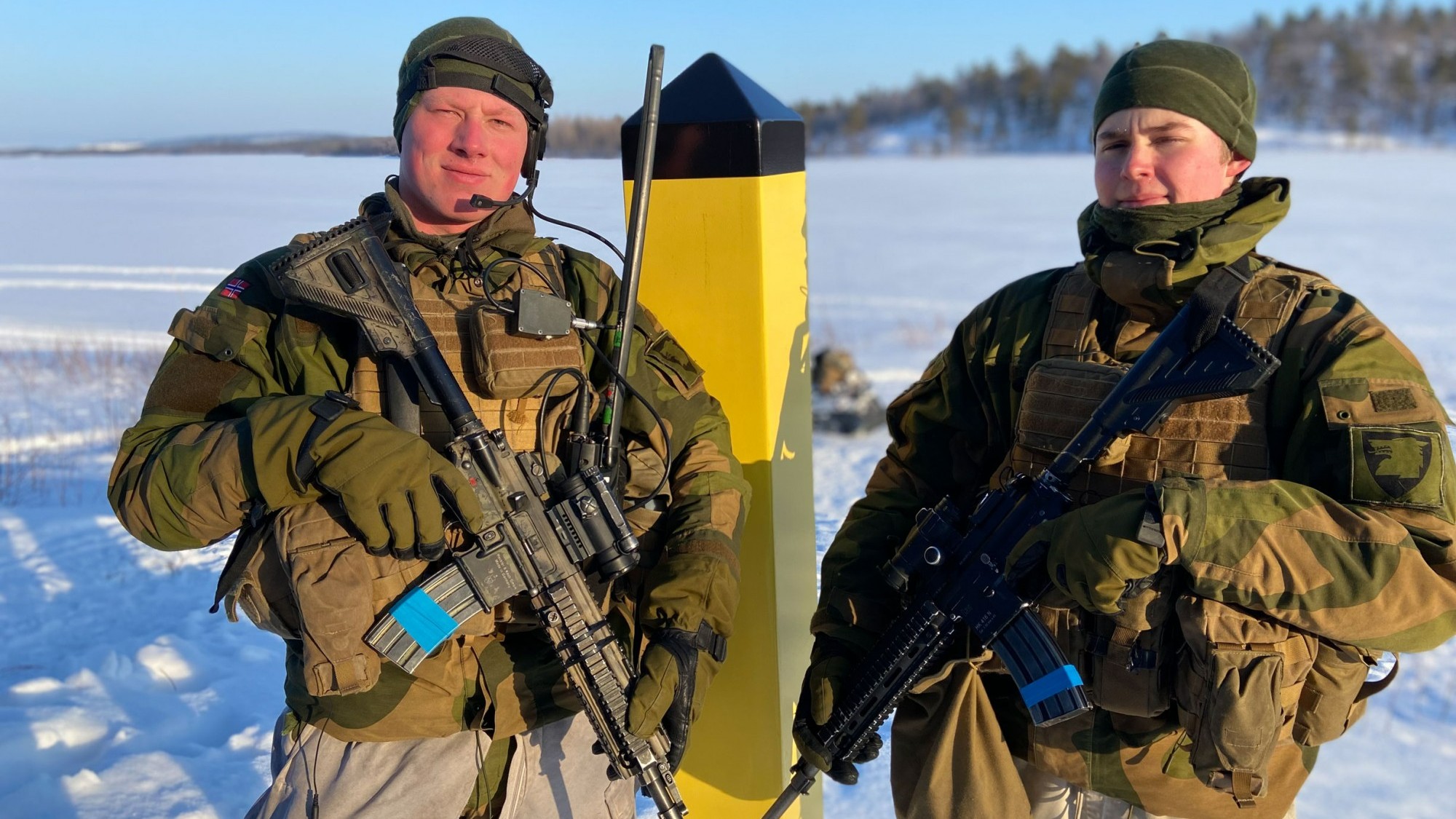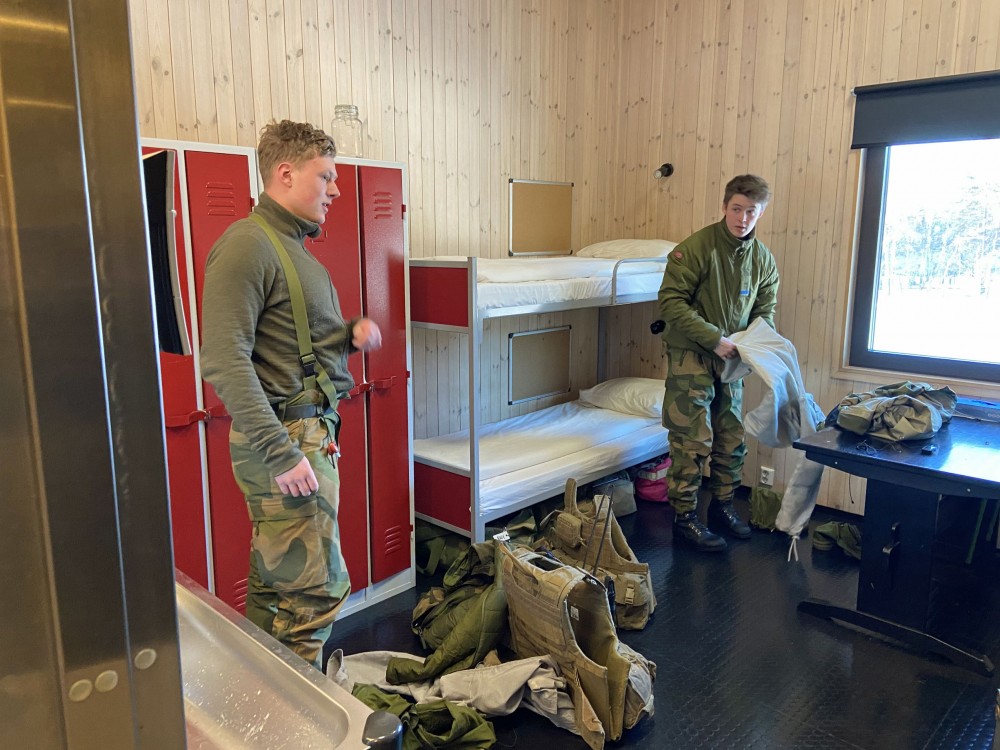On Norway’s Arctic border with Russia, saving refugee lives in extreme cold bigger worry than military invasion

Frontier guard Lars Erik Gausen is well aware that Russian soldiers are training warfare a few kilometers east of the Pasvik River ahead of being sent to Putin’s bloody onslaught on Ukraine. His biggest everyday worry, however, is not a military attack on Norway, but fleeing border crossers in struggle to survive the rugged Arctic wilderness
Unlike other European nations neighboring the military aggressive regime, Norway has no plans to build border fences towards Russia.
“That’s part of the way we are,” explains Lars Erik Gausen. He is head of the unit of frontiers guards at Pasvik Border Station. “If there was a fence on the Norwegian side, it would inflict the lives of people who live here a lot, restrict their freedom of movement. That’s why there is no fence.”
Crossing the river that forms the border, though, is much harder – and dangerous – than climbing a fence. Picturesque snowy taiga nature can seem tempting at first, but being out there carries a risk that quickly can leave you in a life-threatening situation. It is minus 25 degrees Celsius as the Barents Observer joins the border patrol on snowmobiles along the border. Wind chill makes it feel much colder.
We have the best winter gear to stay out for hours, say Aslak (19) and Iver (21). The two young men are conscripts and both agree they are serving in the most exciting unit in the Norwegian Armed Forces. “We have a lot of training and good equipment. We take precautions,” Aslak assures. Iver adds: “We check each other’s faces for cold injuries.”
Frostbite can appear quickly with strong winds and low temperatures. But there are worse scenarios than exposures to cold-blowing Arctic air. The ice on the Pasvik River is far from safe everywhere. Even today, with extreme cold, as we drive northbound along the border, there is open water at some locations. Other places might seem safe to assume a walk can be done, but a thin snow layer could wipe out the sight of non-existing ice. Especially during polar nights and darkness.
Few have ever managed to flee from Russia’s Kola Peninsula across the border with Norway in the wilderness. In winter, even fewer.
In mid-January, however, a defector from the Wagner Group managed to cross the ice on the Pasvik River. The man, Andrei Medvedev, was the first in more than 30 years to do so in wintertime. It was dark when he crossed the border and approached the first house with lights he could see on the Norwegian side. At this time, Russian FSB border guards had already alarmed their colleagues on the western side of the river through official pre-agreed formal channels. It took short time from the alarm bell being triggered at Pasvik Border Station to the fleeing mercenary being detained.

The frontiers’ guards are military but conduct the mission along the border on behalf of the police. Today, Andrei Medvedev is in Oslo where he is seeking asylum and openly cooperating with investigators about what he experienced as an off-the-book soldier in the private military company headed by oligarch Yevgeny Prigozhin.
Local civilians in the Pasvik valley tell to the Barents Observer that Medvedev was lucky to make it safely across the border. Details about how he managed to exit Russia are still limited. According to himself, FSB was shooting after him and brought dogs after he made it over the double barbed-wired fences with inbuilt alarm systems.
Like in Soviet times, the Russian border fences are more about keeping its own population inside, than hindering outsiders to enter the federation.
Meanwhile, no one would be surprised if Vladimir Putin would embark on a second mobilization round to bolster its military forces in Ukraine. Although smiling to reporters when asked about big losses on the battlefields, the dictator’s war isn’t going well for Russia.
During the first call, up to 300,000 so-called mobiks, Russian slang for those mobilized last fall, were sent to Ukraine with little training and outdated gear. At least as many young men left Russia to avoid fighting Putin’s war. Those with Schengen visas fled to Europe, others queued up at airports and borders to countries like Georgia, Kazakhstan and Turkey.
A second mobilization round could be followed by authorities imposing martial law and closing the borders for men. It is illegal to cross the border in the terrain, but desperate people may take desperate measures.
“We are prepared for most cases,” Aslak and Iver tells.
The two Norwegian soldiers are trained on how to rescue a person who falls through the ice. However, getting up from the frozen water is one thing, surviving wet and with hypothermia far away from the nearest road and houses is something else. In minutes the body temperature drops and your heart, internal organs and brain cannot function normally.
Chief of the Pasvik Company, Lars Erik Gausen, elaborates: “With -25°C it is a life-threatening situation immediately. Even if you’re dry it’s cold. It could be pretty dangerous for someone trying to cross the border.”
During the Cold War, this was one of only two land borders NATO had with the Soviet Union. The second was between Turkey and Armenian Soviet Republic.
In the early 1990ties, rules for cross-border travel started to soften at the official checkpoints Storskog and Borisoglebsk. Norway granted multi-entry visas to people in the Murmansk and Arkhangelsk regions and those living nearest to the border, in the towns of Nikel, Zapolyarny and Kirkenes, even got an option to travel without visa in a pre-defined area. At its peak in 2013 the two countries counted more than 320,000 crossings on the road up north.
September 2013 became the last occasion when Norway’s military border guards made a formal visit with tens of conscripts to the FSB border guards’ training camp and station across the river in Salmijärvi.
The year after, Moscow decided to illegally annex Crimea and launched armed conflict in the Donbas region of Ukraine. Since then, bilateral relations have worsened dramatically.
Moscow has officially declared Norway an unfriendly country, and Oslo has frozen all political contacts with Russia and joined the EU sanctions in protest of Putin’s imperialistic war.
Earlier this winter, the Norwegian Intelligence Service (NIS) said Russia’s land forces on Kola are reduced to a fifth of their original numbers before the invasion of Ukraine a year ago. How many of the soldiers from the border areas to Norway that are killed in Ukraine is unclear, but the number could be 1,500. Maybe more.
The men with the Northern Fleet’s 200th Separate Motor Rifle Brigade had their training camps along the Pechenga River; at 19 km, in Loustari and in the village of Pechenga. All are less than an hour’s drive from the border with Norway.

Chief of the NIS, Vice Admiral Nils Andreas Stensønes, told the Barents Observer that reduced forces at the Kola Peninsula may indeed be time-limited.
“[Weakened forces] is correct from a situation awareness perspective, but is wrong from a planning perspective. Russia will make changes in military materials and structures of forces as a result of weaknesses uncovered during the invasion of Ukraine.”
At the border company in Pasvik, Lars Erik Gausen hasn’t lost any sleep over the military threats.
You are prepared?
As good as we can yes, … we are training for a lot of scenarios to be as ready as we can before anything happens, Gausen says.
“The worst case scenario would be war, yes we are prepared. As good as we can be.”
Related stories from around the North:
Canada: Ties in North American Arctic stronger than ever, says Canada, Eye on the Arctic
Finland: Russian shoppers take Norway’s Schengen shortcut to Arctic Finland, Yle News
Greenland: Historic Hans Island agreement with Canada moves from Copenhagen to Greenland, Eye on the Arctic
Norway: Last Norwegian businessmen in Murmansk mum on customers, The Independent Barents Observer
Russia: Russia’s Arctic Brigade in Alakurtti is counting its many dead, The Independent Barents Observer
Sweden: Sweden, Norway and Finland cooperating to attract workers to the Far North, Radio Sweden
United States: A year after Russia invaded Ukraine, a walrus discovery is caught up in geopolitics, Alaska Public News



